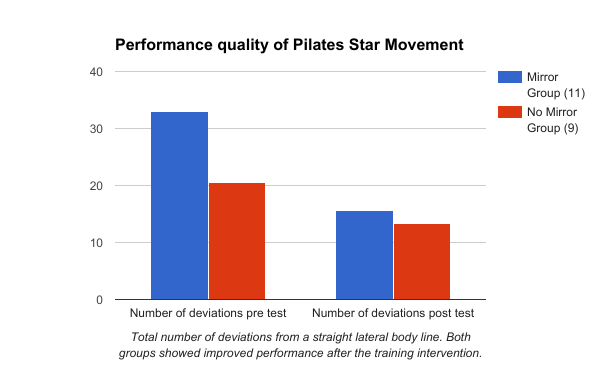What’s This Research About?
Is it good or bad to use mirrors in yoga class?
I recall this has been a topic of discussion since for yoga teachers since the early 90s when I started practicing yoga. Yoga teachers may find
the mirrors to be a distracting external tool when yoga “should” be about cultivating internal awareness. Mirrors are often used in gyms, dance studios, pilates studios and martial arts studios. They serve as a tool that provides immediate feedback to potentially help people learn movement skills better.
Ultimately it depends on your preference as a teacher or student, but this study looks at what impact the mirrors have on learning the pilates STAR movement. Is it best to learn a motor skill (that eventually will be done without mirrors) with or without mirrors? It’s important for teachers to know that learning a movement skill can be objectively measured and analyzed to help us be better teachers.

TITLE: Effect on performance of learning a pilates skill with or without a mirror
PUBLICATION: Journal of Bodywork and Movement Therapies
DATE: 2009
AUTHORS : Jennifer A. Lynch, Gordon R. Chalmers, Kathleen M. Knutzen, Lea Ann T. Martin
Star Movement: The pilates skill that they look at is the STAR Movement which is similar to side plank (Vasistasana) in yoga asana except that the top leg is raised and lowered.
When learning a motor skill there are a lot of different ways to get feedback. We talk about these ideas in yoga but we don’t use the terminology you might find in a research paper like this:
Concurrent feedback: feedback without delay. In the moment you receive feedback and can correct right then and there. This study is looking at concurrent feedback in a skill acquisition.
Augmented feedback: Receiving feedback from an extrinsic source outside of the body.
Intrinsic feedback: Relying on personal internal feedback which we rely on a lot in yoga.

